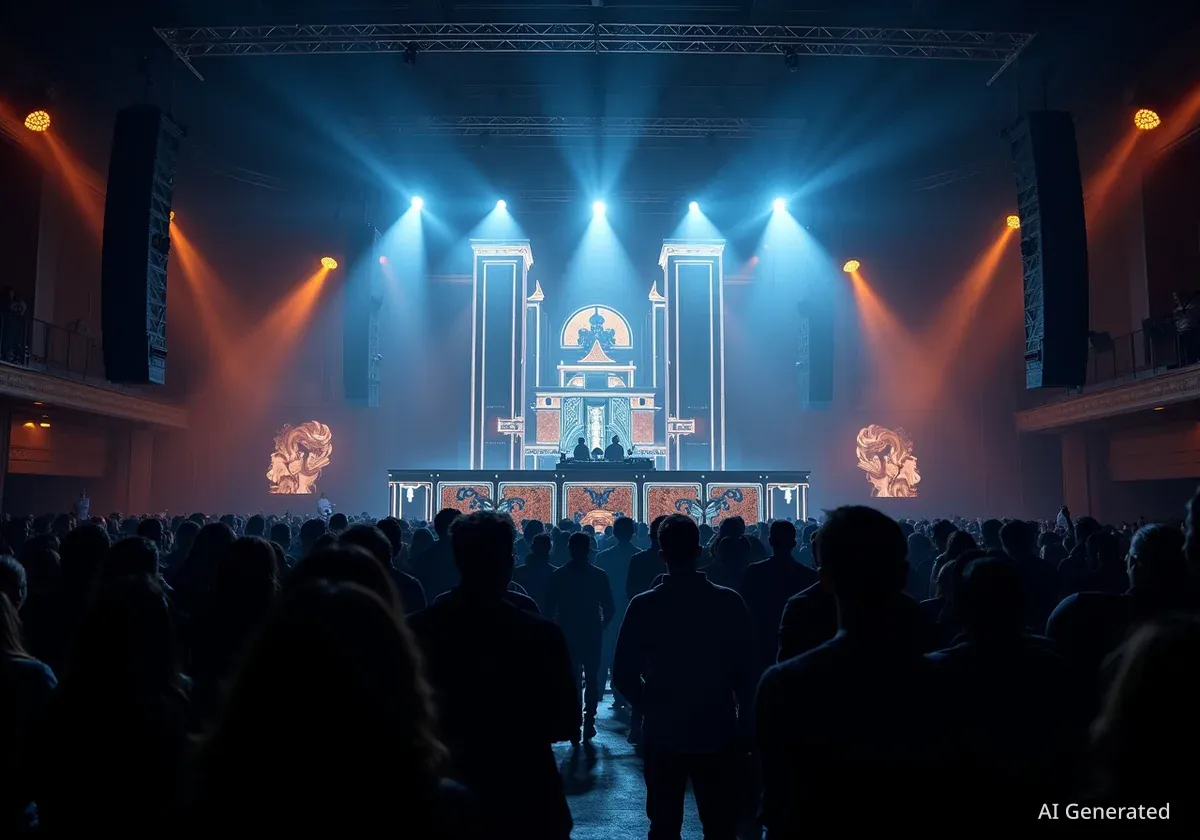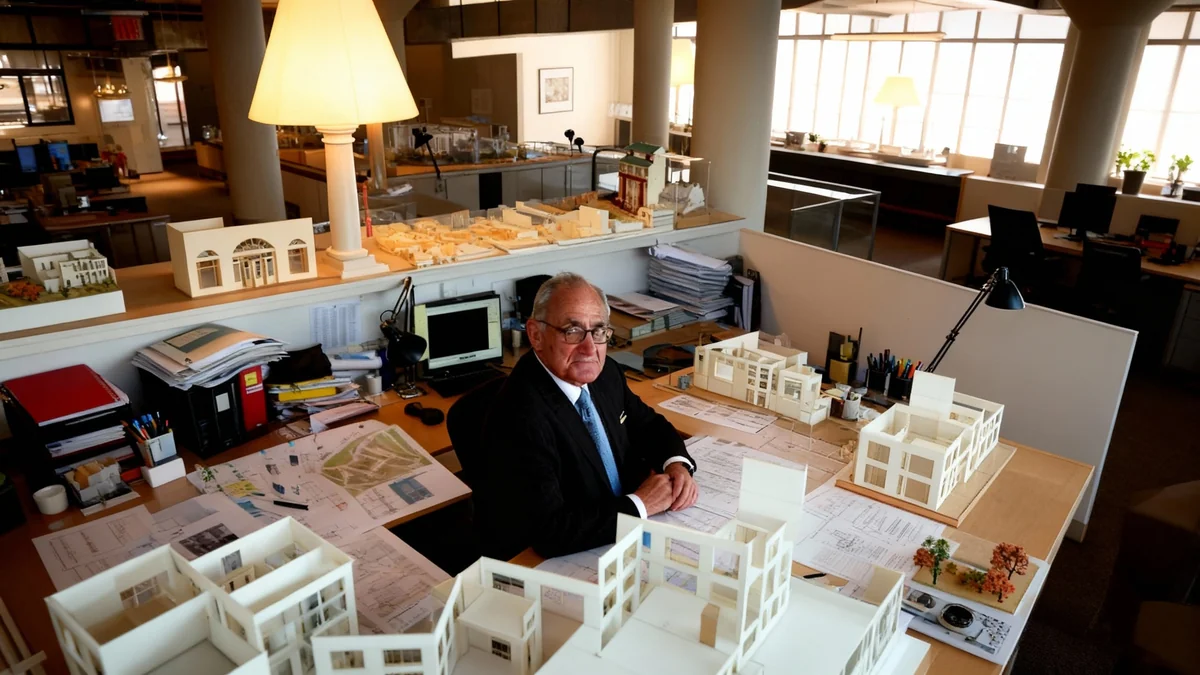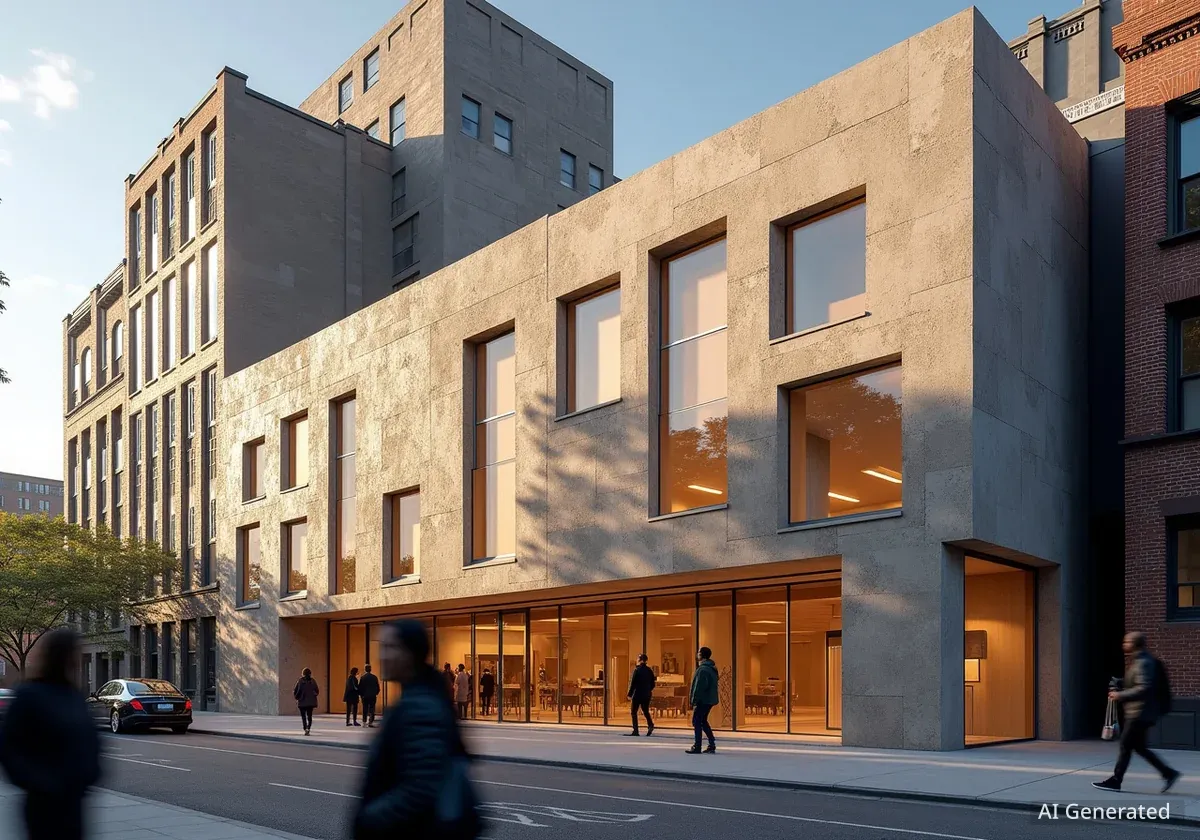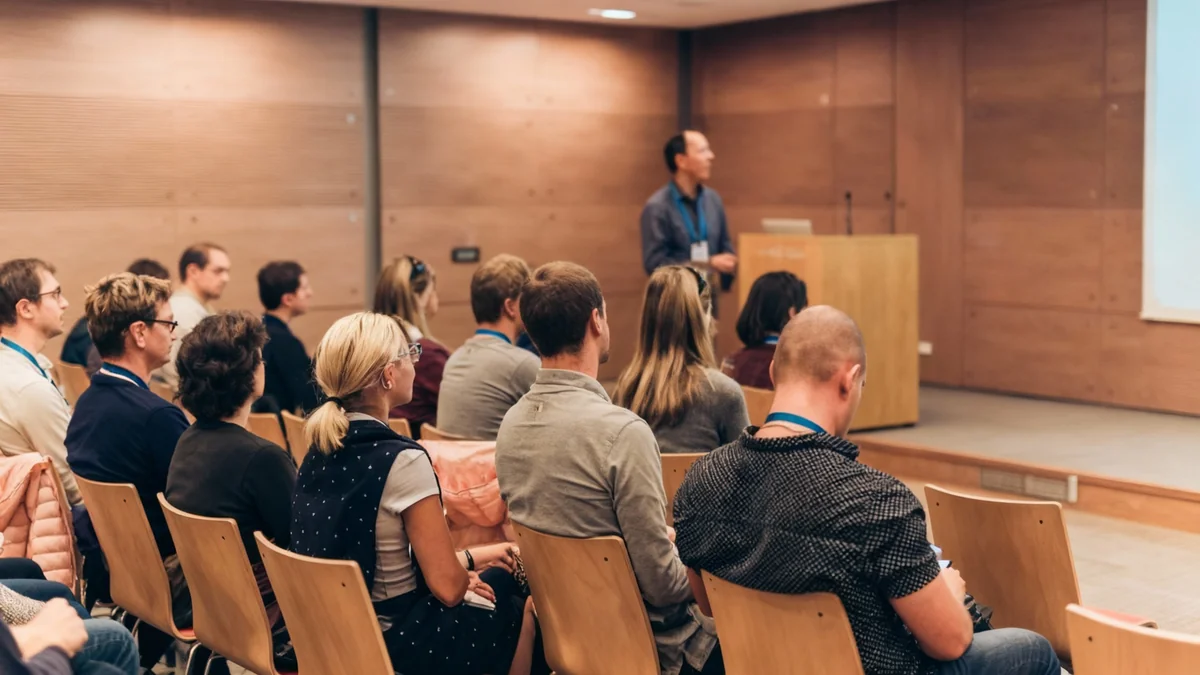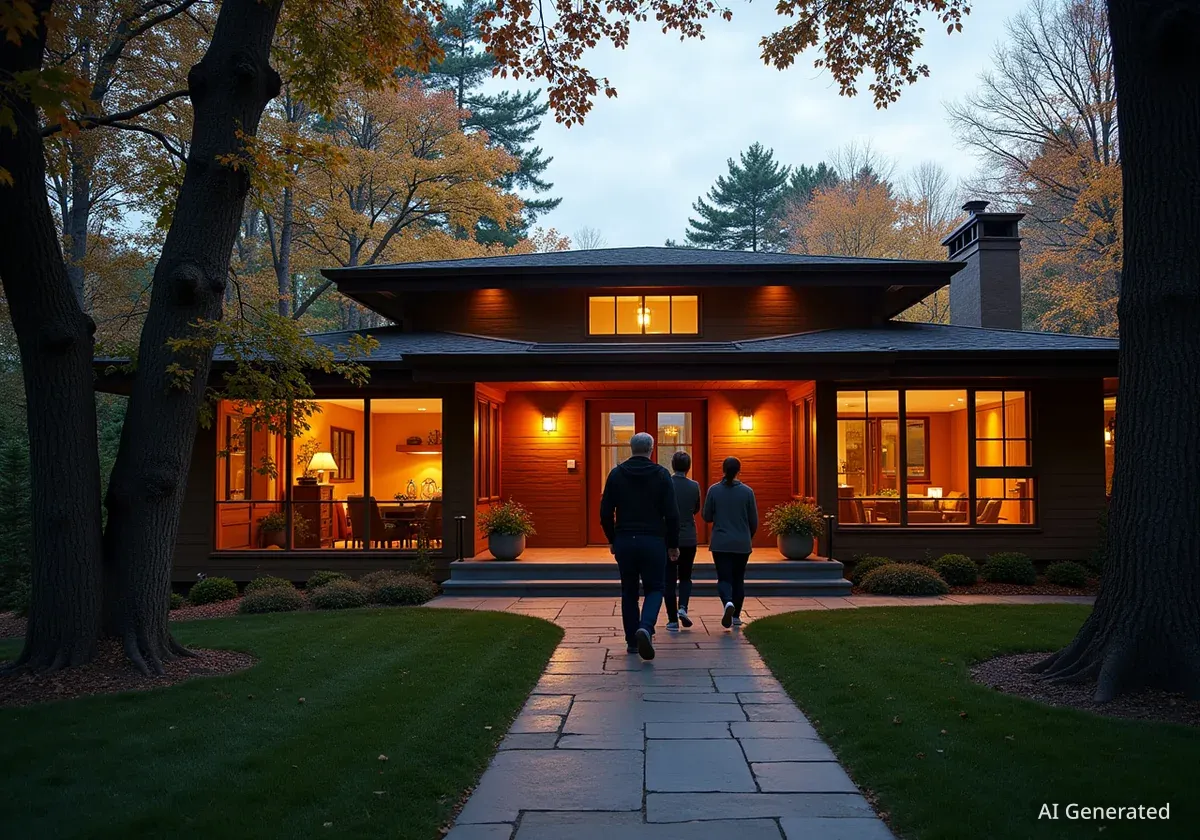Across the world, from Tokyo bathhouses to Brooklyn nightclubs, DJ booths are evolving into focal points of interior design. These dedicated spaces are no longer just functional areas for equipment. They are becoming integral parts of a venue's aesthetic, often featuring unique materials, lighting, and architectural forms that draw attention and enhance the overall atmosphere. This trend highlights a renewed focus on music culture and the spaces where it thrives, with design studios incorporating innovative elements like mirrored cladding, shipping containers, and even giant disco balls.
Key Takeaways
- DJ booths are now central to venue design, not just functional spaces.
- Unique materials like metal, wood, and mirrored tiles define these installations.
- Designs range from semi-circular VIP areas to repurposed shipping containers.
- The trend reflects a global resurgence in dance music culture.
- Venues prioritize aesthetics and acoustics in booth construction.
The Evolution of DJ Booth Design
The role of the DJ booth has significantly expanded. Once a secondary element, it now stands as a primary design feature in many modern establishments. This shift reflects the growing importance of music and live performances in creating a venue's identity. Designers are pushing creative boundaries to make these booths visually striking and acoustically optimized.
Architects and interior designers are using a variety of materials and concepts. These include sleek metallic finishes, warm wooden textures, and even repurposed industrial components. The goal is often to create a distinct presence that complements the venue's overall theme while providing an optimal environment for the DJ and the audience.
Design Fact
In some venues, the DJ booth is designed to be convertible, allowing the space to serve multiple functions. This adaptability is crucial for venues that host various events, from casual gatherings to full-scale music nights.
Global Examples of Innovative Booths
Unveiled, USA: Mirrored and Metallic
In Brooklyn, New York, the nightclub Unveiled features a striking DJ booth. Located in the basement of the William Vale hotel, this club incorporates a semi-circular VIP area positioned directly behind the booth. The booth itself boasts a smooth, mirrored cladding that reflects the club's blue lighting, creating a dynamic visual effect. The surrounding dancefloor walls are clad in hammered metal, adding to the venue's industrial-chic aesthetic.
"The metallic surfaces and strategic lighting in Unveiled create an immersive experience, making the DJ booth a glowing centerpiece," commented one design observer.
JAM Record Bar, Australia: Pink Plywood Aesthetic
Sydney's JAM Record Bar draws inspiration from Tokyo's classic listening bars. Its interior is lined with an extensive collection of 15,000 vinyl records. The compact DJ booth is subtly placed within a nook at the bar's end. Consistent with the rest of the interior, the booth is clad in pink plywood. This choice of material contributes to a warm, inviting atmosphere, reminiscent of mid-century design.
This design choice emphasizes a relaxed, intimate listening experience. The booth integrates seamlessly into the overall decor, highlighting the venue's dedication to vinyl culture and a specific retro aesthetic. It demonstrates how even small booths can become significant design elements.
Context: Listening Bar Culture
Listening bars, originating in Japan, prioritize the act of listening to music over dancing. They often feature high-quality sound systems and extensive record collections, creating a refined experience for music enthusiasts. The DJ booth in such venues is central to curating the sonic journey.
Thematic Designs and Repurposed Structures
Oven, Spain: Industrial Warmth
Valencia's Oven techno club lives up to its name with a design that evokes the feeling of an oven. The interior features walls clad in red and black Alpi wood, exhibiting a rippled burl pattern that extends upwards. In contrast, the central DJ booth and other surfaces are clad in stainless steel. This metallic finish reflects the club's warm-toned lighting, intensifying the oven-like ambiance and creating a striking visual contrast with the wood.
The combination of warm wood and reflective steel creates a unique sensory experience. It highlights how material selection directly influences the perception of a space. The booth becomes a focal point that both absorbs and reflects the club's intense atmosphere.
The Nursery at Public Records, USA: Shipping Container Booth
Public Records, a music venue in Brooklyn, expanded its Gowanus complex with The Nursery, an outdoor music space. This outdoor venue features a DJ booth ingeniously tucked inside a shipping container. Local studio Space Exploration handled the booth's minimal interior design. Two large, teal speakers, designed by audio studio OJAS, flank the booth, providing powerful sound for outdoor performances.
This innovative use of a shipping container demonstrates a trend towards sustainable and adaptable design. It offers a robust, weather-resistant structure that can be easily integrated into outdoor settings. The minimalist design inside the container ensures that the focus remains on the music and performance.
Natural Materials and Grand Statements
Bursa Bar, Ukraine: Wood-Lined Acoustics
The Bursa Bar, situated on the ground floor of the boutique Bursa Hotel in Kyiv, features a wood-lined interior. Its DJ booth is positioned towards the back, clad in the same dark wood as the surrounding restaurant. A mossy green, latticed ceiling was installed above to enhance acoustics. This harmonious design integrates the booth into the bar's sophisticated, natural aesthetic, emphasizing both visual appeal and sound quality.
The consistent use of dark wood creates a cohesive and elegant environment. The acoustic ceiling is a practical addition that also contributes to the visual texture of the space. This design illustrates a balanced approach to aesthetics and functionality.
Supernova, USA: The Giant Disco Ball
In Seattle, the Supernova nightclub is built around a truly unique DJ booth: a massive disco ball. This eight-foot (2.4-meter) diameter structure is covered in mirrored tiles. It conceals a semi-circular desk inside, providing space for the DJ's equipment. This design makes the booth an undeniable centerpiece, instantly recognizable and highly engaging for club-goers.
The disco ball booth is a bold statement, transforming a functional element into an iconic sculptural piece. It harks back to classic club aesthetics while offering a modern twist. This approach ensures the DJ is at the literal center of the action, surrounded by shimmering light.
Scale and Impact
The 8-foot diameter disco ball DJ booth at Supernova is a prime example of how scale can be used to create an unforgettable design element. Its size ensures it dominates the space, becoming the club's signature feature.
Versatility and Community Hubs
Koganeyu, Japan: Bathhouse to Event Space
Schemata Architects modernized the 1980s Koganeyu bathhouse in Tokyo. Part of this renovation included adding a central bar. This bar was specifically designed to convert into a DJ booth, allowing the room to function as an events space. This versatility aims to attract new visitors and expand the bathhouse's utility beyond its traditional purpose, blending relaxation with entertainment.
The ability to transform a space is a key design innovation. It allows venues to maximize their potential and cater to a wider audience. This adaptable design reflects a contemporary approach to multi-functional public spaces.
Side A, USA: Design, Music, and Culinary Arts
In San Francisco, the restaurant Side A features a custom aluminum DJ booth positioned next to the bar, in front of a wall adorned with vinyl records. Studio Ahead co-founder Elena Dendiberi explained the intent: "Our intent was for design, music, and the culinary arts to come together in a hub for the creatives of the neighborhood." This concept positions the DJ booth as a central element in a broader cultural experience, combining different forms of art.
The integration of the booth into a restaurant setting highlights a trend of merging dining with entertainment. The vinyl record wall further reinforces the venue's dedication to music, making the booth a natural extension of its artistic identity. It serves as a gathering point for local creatives.
The Future of Musical Spaces
These examples demonstrate a clear trend: DJ booths are no longer just practical installations. They are becoming architectural statements and crucial components of a venue's brand and atmosphere. As dance music culture continues to grow globally, the design of these central hubs will likely become even more innovative and integrated into the overall experience of nightclubs, bars, and event spaces. Designers are increasingly challenged to create visually captivating and acoustically superior environments that place music and performance at their core.
The emphasis on unique materials, creative lighting, and multi-functional designs underscores a commitment to enhancing the user experience. From reflective surfaces that amplify light to natural wood finishes that improve acoustics, each design choice contributes to a memorable setting. This evolution ensures that the spaces where music is played are as dynamic and engaging as the music itself.
